 "ttyymmnn" (ttyymmnn)
"ttyymmnn" (ttyymmnn)
03/18/2016 at 12:35 • Filed to: planelopnik, planelopnik history
 12
12
 5
5
 "ttyymmnn" (ttyymmnn)
"ttyymmnn" (ttyymmnn)
03/18/2016 at 12:35 • Filed to: planelopnik, planelopnik history |  12 12
|  5 5 |
Welcome to This Date in Aviation History , getting you caught up on milestones, important historical events and people in aviation from March 16 through March 18.
!!! UNKNOWN CONTENT TYPE !!!

March 16, 1926 – Robert Goddard launches the first liquid-fuelled rocket. Spaceflight is arguably one of mankind’s greatest achievements in aviation, and while many point to the influence of Germany’s !!!error: Indecipherable SUB-paragraph formatting!!! on the American space program following WWII, perhaps the greatest achievements in the nascent science of spaceflight can be traced back to American Robert Goddard, who is generally accepted to be the father of space flight and modern rocketry, and the man who single-handedly ushered in the Space Age. But Goddard was not only an inventor who held 214 patents, he was also a physicist and engineer, whose revolutionary work in the field of rockets and orbital theory laid the groundwork for all those who followed. His work also led to developments in atmospheric research, ballistic missiles and manned space travel. As a young boy, Goddard was influenced by the science fiction writings of !!!error: Indecipherable SUB-paragraph formatting!!! , particularly !!!error: Indecipherable SUB-paragraph formatting!!! , and he soon began to study the works of others, such as Samuel Langley, who wrote about flight for Smithsonian magazine. By 1913, Goddard was studying calculus and developed the mathematics that made it possible for him to calculate the position and velocity of a rocket in vertical flight, as well as calculate the necessary forces to get rockets of differing weights into the atmosphere. After first working with powder rockets, Goddard realized that, in order to gain the velocities necessary to reach space, he would need to use a !!!error: Indecipherable SUB-paragraph formatting!!! . Starting in September of 1921, Goddard began to experiment with liquid-fueled rockets using a liquid oxidizer, and he successfully tested the first rocket engine using a liquid propellant in 1923. His first successful launch, using a rocket fueled with gasoline and liquid oxygen, took place on March 16, 1926 at Auburn, Massachusetts. Though that first flight only lifted a mere 41 feet into the air, it demonstrated the potential of the liquid fuel engine. With the launch of 33 subsequent rockets, Goddard and his team reached altitudes as high as 1.6 miles and speeds up to 550 mph. In addition to building rockets, Goddard also pioneered three-axis control, the use of gyroscopes for stability, and steerable thrust rockets to control the rocket in flight. His first rocket used static fins, but later models employed steerable vanes in the exhaust that were controlled by a gyroscope, a method that was later copied by the Germans for use in the !!!error: Indecipherable SUB-paragraph formatting!!! rockets they used to attack England in the late stages of WWII. He also pioneered a system that steered the nozzle itself, a system that is still in use today. Unfortunately for Goddard, many in the US government and military failed to appreciate the importance of his work and, by the end of WWII, the Germans had outpaced the US in rocket development, possibly using Goddard’s own data that had been transferred to Germany by spies in the US. Still, Goddard’s work cemented him in the history of space exploration, and the !!!error: Indecipherable SUB-paragraph formatting!!! in Maryland, as well as the !!!error: Indecipherable SUB-paragraph formatting!!! on the Moon, are named in his honor. (Library of Congress photo)
!!! UNKNOWN CONTENT TYPE !!!
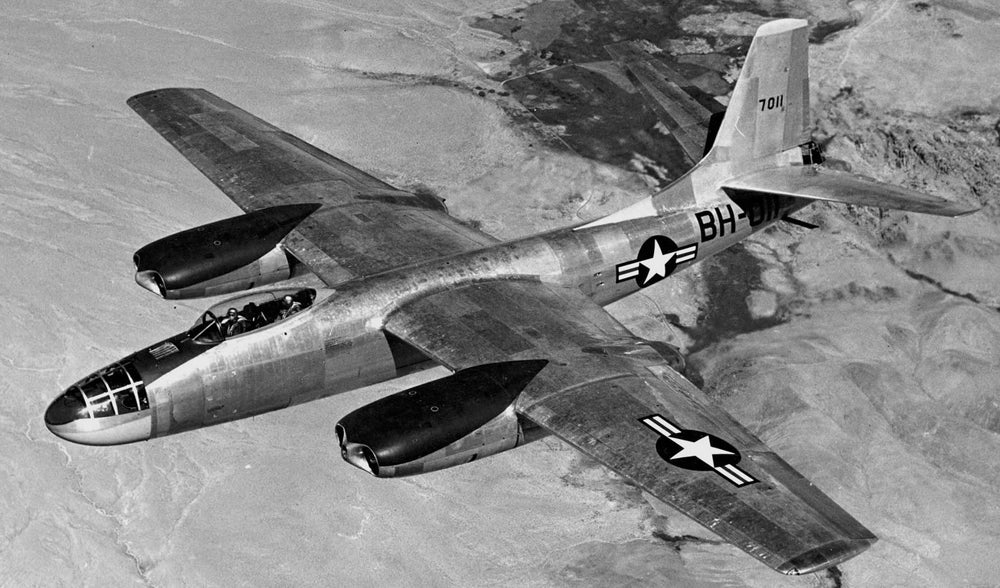
March 17, 1947 – The first flight of the North American B-45 Tornado. By the later stages of WWII, German development of jet aircraft had the Allies scrambling to develop their own. The Germans had already fielded the world’s first operational jet bomber, the !!!error: Indecipherable SUB-paragraph formatting!!! and, though it was only built in limited numbers, it was clear that the future lay in jet engine. Development of the Tornado began in 1944 with a requirement from the US War Department for a new jet-powered bomber and, following submissions from several companies, the North American NA-130 was chosen as the winner on September 8, 1944. Like most early jet designs, the B-45 had straight wings and was powered by four !!!error: Indecipherable SUB-paragraph formatting!!! turbojets housed in nacelles in the wing. Maximum speed was 570 mph with a range of 1,000 miles, and it could carry up to 22,000 pounds of bombs. It was also armed with two .50 caliber machine guns in the tail for defense against fighters. With the end of WWII, the Air Fore took stock of ongoing development programs, and many projects were either delayed or canceled altogether. But with the !!!error: Indecipherable SUB-paragraph formatting!!! starting to heat up, the Air Force placed special emphasis on nuclear-armed bombers. A decision had to be taken whether to produce the B-45, or the !!!error: Indecipherable SUB-paragraph formatting!!! , which was similar to the Tornado in many ways. After an evaluation, the B-45 was chosen as the better aircraft, and North American was given a contract to produce the B-45 beginning in January 1947. Like so many other early jet aircraft, the B-45 was a victim of the slow pace of jet development and shrinking budgets. The !!!error: Indecipherable SUB-paragraph formatting!!! , which would take advantage of captured German data on swept wing design, would take its first flight in less than a year and offer greater speed and almost twice the combat range. Shrinking post-war budgets also meant that the Air Force would have limit the number of projects it could develop, and with the B-47 looming on the horizon, production of the B-45 was cut further, resulting in a final production run of 143 aircraft. Still, the Tornado holds the distinction of being America’s first operational jet bomber and the world’s first multi-jet engined bomber to be refueled in midair. Despite its relatively short service life, the Tornado filled an important gap in America’s and NATO’s nuclear deterrence force, particularly during the Korean War, when so many military assets had been sent to Asia. In 1952, B-45s were modified to carry nuclear bombs and sent to England, and reconnaissance versions of the B-45 provided valuable intelligence over Korea, where they complemented older !!!error: Indecipherable SUB-paragraph formatting!!! piston-powered reconnaissance aircraft that had proven vulnerable to enemy jet fighters. After the war, the Tornado made some overflights of the Soviet Union, but those missions were soon taken over by the !!!error: Indecipherable SUB-paragraph formatting!!! (known as the Martin B-57 in American service), which could fly at higher altitudes. The B-45 was removed from active service by the end of the 1950s, though some served for a few more years as test aircraft. (US Air Force photo)
!!! UNKNOWN CONTENT TYPE !!!
Short Take Off
!!! UNKNOWN CONTENT TYPE !!!

March 16, 1947 – The first flight of the Convair CV-240, originally designed as a larger, more modern replacement for the !!!error: Indecipherable SUB-paragraph formatting!!! . Like the Douglas aircraft, the prototype 240 was unpressurized, but the airline’s requirement for a pressurized hull led to a redesign of the original prototype. This lengthened the fuselage and added 10 more seats, bringing initial capacity to 40 passengers. Continued development of the CV-240 saw further lengthening of the fuselage and wings, and the eventual incorporation of turboprop engines. The CV-240 was the first private aircraft to be used in a US presidential election when John F. Kennedy flew in one named Caroline after his daughter. The 240 also served in the Air Force as the C-131 Samaritan and the US Navy as the R4Y. Just under 1,200 aircraft were produced between 1947-1954. (Photo by Bill Larkins via !!!error: Indecipherable SUB-paragraph formatting!!! )
!!! UNKNOWN CONTENT TYPE !!!

March 17, 1997 – Linda Finch takes off on a flight to recreate and complete the ill-fated round-the-world flight of Amelia Earhart. Finch, an aviatrix and businesswoman from San Antonio, TX, took off in a restored 1935 !!!error: Indecipherable SUB-paragraph formatting!!! that had been prepared identically to Earhart’s plane. Finch’s flight took 10 weeks to complete while flying legs of 8 to 18 hours at a time, stopped at 36 different locations in 18 countries, and covered approximately 26,000 miles. Finch’s Electra has been acquired by the !!!error: Indecipherable SUB-paragraph formatting!!! in Seattle, Washington and will be displayed. It should be noted that March 17 is the departure date for Earhart’s first attempt at circumnavigation of the globe. The second attempt, in which Earhart and copilot Fred Noonan disappeared, was begun on July 2, 1937. (Finch photo by Frank Vargo via !!!error: Indecipherable SUB-paragraph formatting!!! ; Electra photo via !!!error: Indecipherable SUB-paragraph formatting!!! )
!!! UNKNOWN CONTENT TYPE !!!
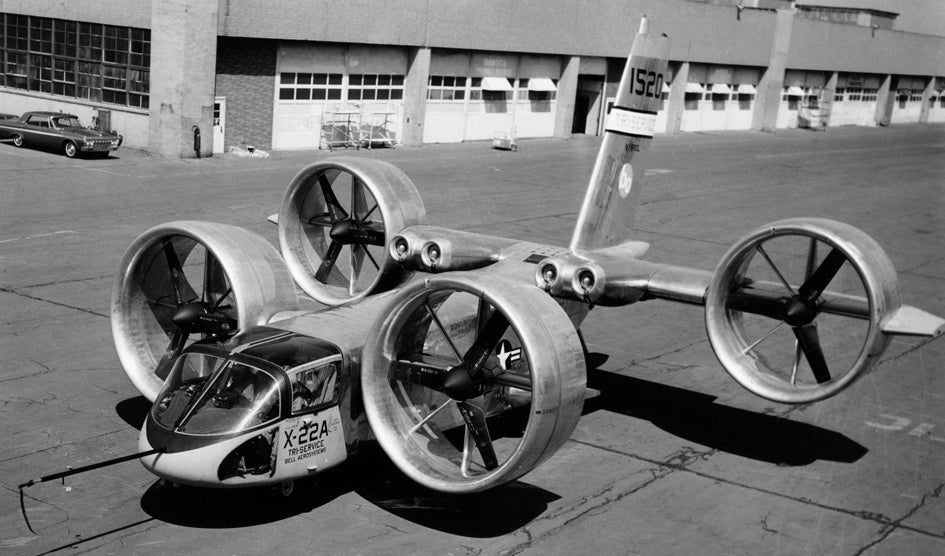
March 17, 1966 – The first flight of the Bell X-22, an experimental vertical/short takeoff and landing ( !!!error: Indecipherable SUB-paragraph formatting!!! ) aircraft. Lift was provided by four large ducted fans driven by four !!!error: Indecipherable SUB-paragraph formatting!!! turboshaft engines. Developed to investigate practical use of vertical takeoff aircraft for the transport of troops and cargo, the X-22 successfully transitioned from vertical to forward flight soon after its maiden flight, though a crash six months later led to the loss of the first prototype. Though it was the most successful aircraft of its type at the time, the hoped-for speed of 315 mph was never achieved and the project was canceled. The second prototype, the X-22A, is now on display at the !!!error: Indecipherable SUB-paragraph formatting!!! in New York. (Photo via !!!error: Indecipherable SUB-paragraph formatting!!! )
!!! UNKNOWN CONTENT TYPE !!!

March 17, 1936 – The first flight of the Armstrong Whitworth Whitley, one of three twin-engine medium bombers to serve the RAF during WWII. The Whitley was introduced in 1937 to replace the !!!error: Indecipherable SUB-paragraph formatting!!! biplane bomber, and took part in the first RAF bombing raids of the German homeland, though it was essentially obsolete by the start of the war in 1939. Following the introduction of larger, four-engine bombers later in the war, the Whitley was retired from frontline service in 1942 and relegated to maritime reconnaissance duties. It also served as a glider tug, trainer and transport aircraft. A total of 1,814 Whitleys were produced, and the bomber was fully retired with the end of the war. (RAF photo)
!!! UNKNOWN CONTENT TYPE !!!
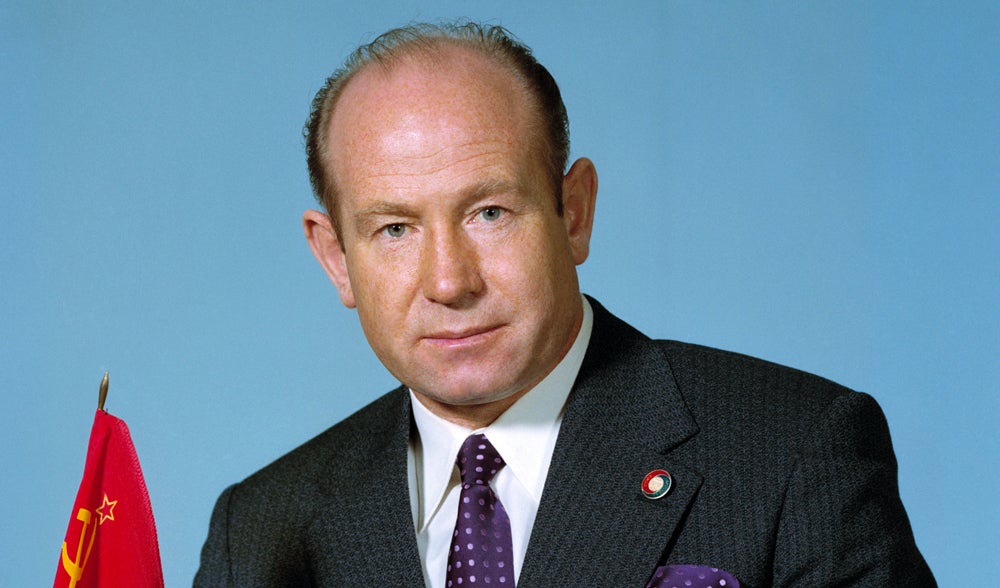
March 18, 1965 – Cosmonaut Alexei Leonov becomes the first person to “walk” in space. Leonov was one of 20 Soviet Air Force pilots selected as the first cosmonauts in 1960, and his first flight to space was on board !!!error: Indecipherable SUB-paragraph formatting!!! as part of Russia’s manned space program. During Leonov’s 12-minute-long extravehicular activity (EVA), his spacesuit inflated to the point where he could not re-enter the capsule. He had to release a pressure valve on the suit and only then just barely made it back inside. Leonov returned to space for the second and last time in 1975 as commander of Soyuz 19, part of the !!!error: Indecipherable SUB-paragraph formatting!!! in which a Soviet and an American space capsule docked together in space to mark the symbolic end of the !!!error: Indecipherable SUB-paragraph formatting!!! . (NASA photo)
!!! UNKNOWN CONTENT TYPE !!!
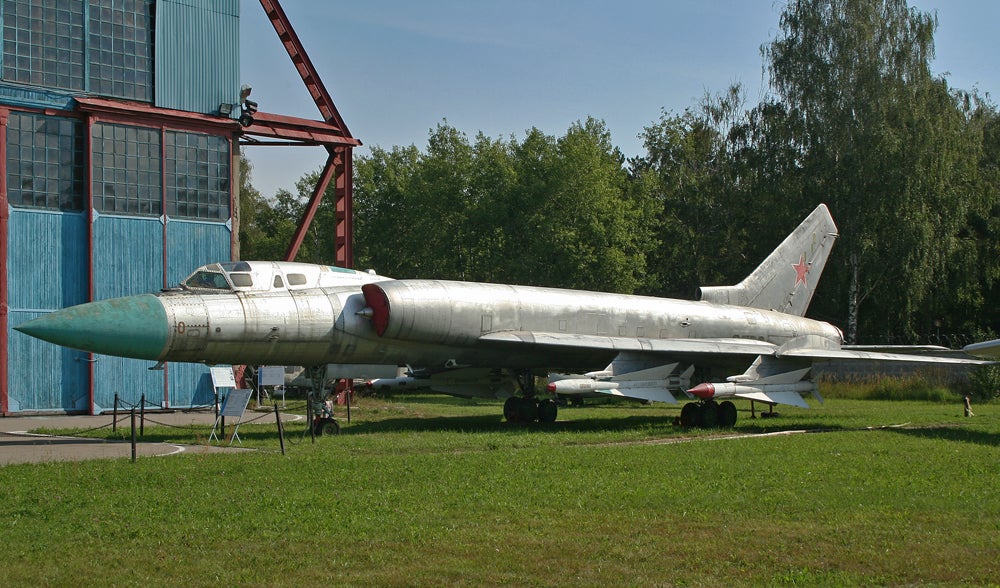
March 18, 1961 – The first flight of the Tupolev Tu-28, a long-range interceptor introduced to the Soviet Air Force in the late 1960s and the largest interceptor to fulfill that role ever to enter service. To protect Russia’s vast territory, Tupolev designed a supersonic interceptor with an enormous fuel load, radar, and the best air-to-air missiles available at the time. The Tu-28, also called Tu-128 by the Soviets, was never intended as a dogfighter, rather it’s mission was to intercept American bombers such as the !!!error: Indecipherable SUB-paragraph formatting!!! . The Tu-28 had an estimated top speed of Mach 1.5 and a range of 1,600 miles, but could not fly above 15,600 feet when armed. Just under 200 were built, and the type was retired in 1990. (Photo by Alan Wilson via !!!error: Indecipherable SUB-paragraph formatting!!! )
!!! UNKNOWN CONTENT TYPE !!!

March 18, 1913 – The birth of Werner Mölders, a Luftwaffe fighter pilot in WWII and the leading German ace of the !!!error: Indecipherable SUB-paragraph formatting!!! . During Mölder’s brief career, he became the first fighter pilot in history to achieve 100 combat victories, and was also instrumental in the development of the !!!error: Indecipherable SUB-paragraph formatting!!! formation for fighter aircraft. After fighting in the Spanish Civil War, Mölders fought in the !!!error: Indecipherable SUB-paragraph formatting!!! and !!!error: Indecipherable SUB-paragraph formatting!!! before being sent to the !!!error: Indecipherable SUB-paragraph formatting!!! during !!!error: Indecipherable SUB-paragraph formatting!!! , the German invasion of Russia. For propaganda reasons, Mölders was removed from combat, but was killed while a passenger in the crash of a !!!error: Indecipherable SUB-paragraph formatting!!! following an engine failure. Mölders was just 28 years old at the time of his death. (Photo via the !!!error: Indecipherable SUB-paragraph formatting!!! )
!!! UNKNOWN CONTENT TYPE !!!
Recent Aviation History Posts
!!! UNKNOWN CONTENT TYPE !!!
!!! UNKNOWN CONTENT TYPE !!!
!!! UNKNOWN CONTENT TYPE !!!
!!! UNKNOWN CONTENT TYPE !!!
!!! UNKNOWN CONTENT TYPE !!!
If you enjoy these Aviation History posts, please let me know in the comments. And if you missed any of the past articles, you can find them all at
!!!error: Indecipherable SUB-paragraph formatting!!!
.
!!! UNKNOWN CONTENT TYPE !!!
 uofime-2
> ttyymmnn
uofime-2
> ttyymmnn
03/18/2016 at 15:06 |
|
I think you’ve got a typo here:
The Tu-28 had an estimated top speed of Mach 1.5 and a range of 1,600 miles, but could not fly about 15,600 feet when armed
Also, was a reason given for the altitude restriction while armed?
 ttyymmnn
> uofime-2
ttyymmnn
> uofime-2
03/18/2016 at 22:00 |
|
Should be “above.” As for the reason, I’d have to go back and check. I don’t think the engine had enough grunt.
 You can tell a Finn but you can't tell him much
> ttyymmnn
You can tell a Finn but you can't tell him much
> ttyymmnn
03/21/2016 at 14:58 |
|
Wikipedia seems to think the service ceiling was 15,600 m when armed. That would be about 51,000 feet.
 ttyymmnn
> You can tell a Finn but you can't tell him much
ttyymmnn
> You can tell a Finn but you can't tell him much
03/21/2016 at 15:08 |
|
Then I may have made a typo. It wouldn’t be the first time I got meters and feet mixed up. It happens to the best of them .
 You can tell a Finn but you can't tell him much
> ttyymmnn
You can tell a Finn but you can't tell him much
> ttyymmnn
03/21/2016 at 16:00 |
|
I was going to reference this to help ease the pain. You beat me to the punch.
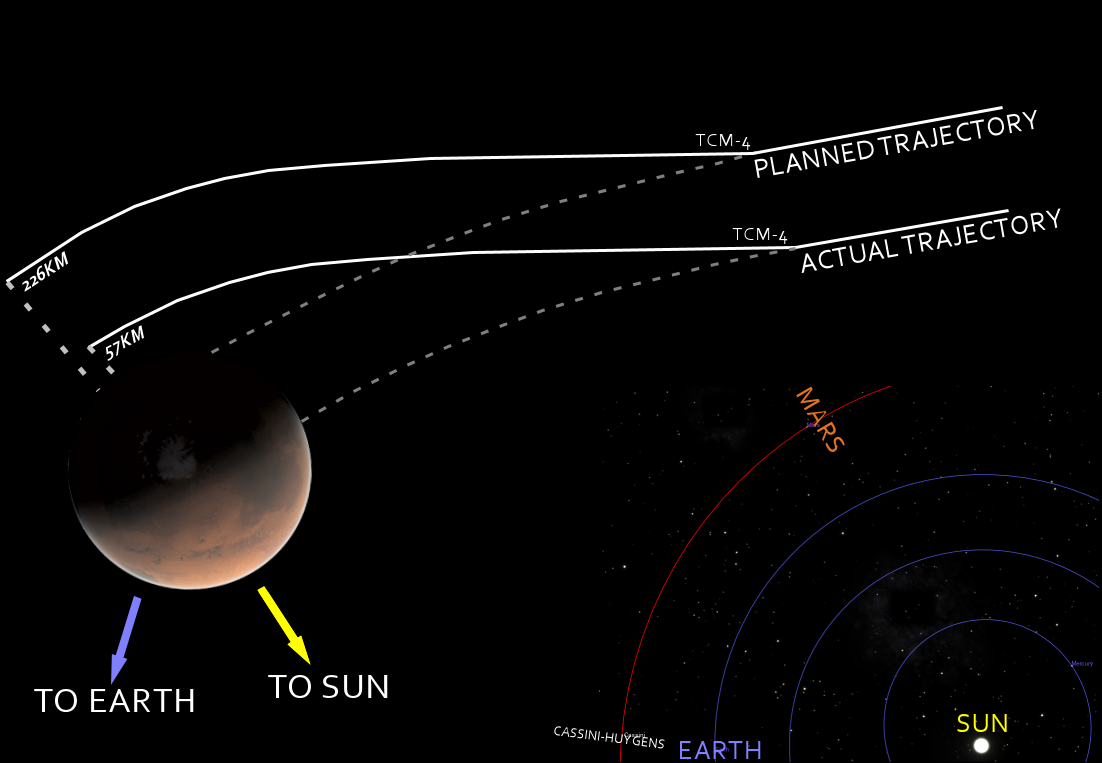
By Xession - Own work, CC BY 3.0, https://commons.wikimedia.org/w/index.php?cu…